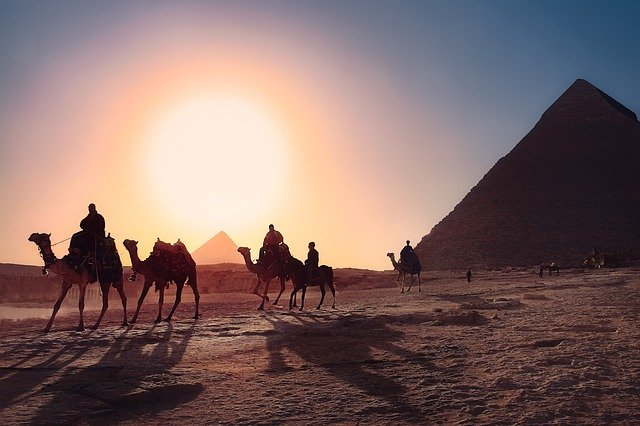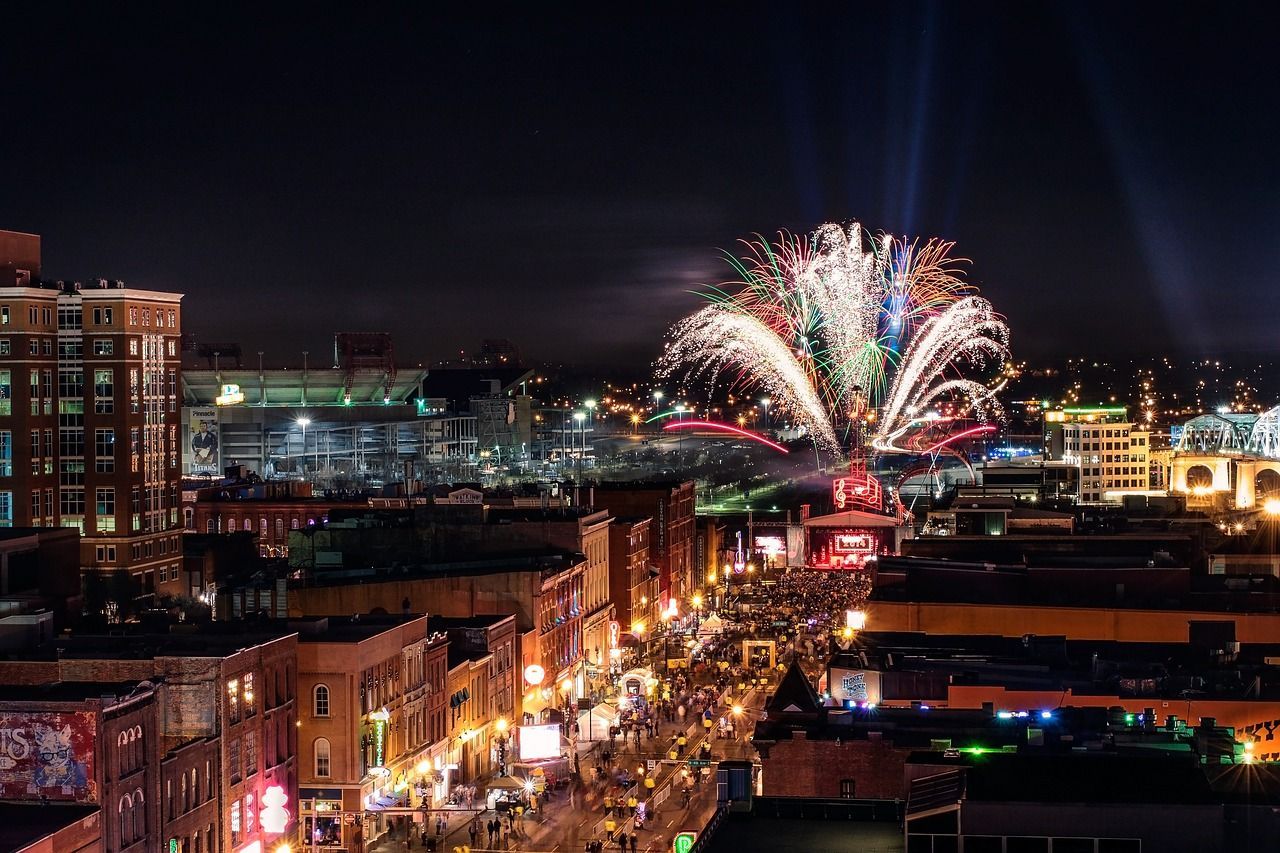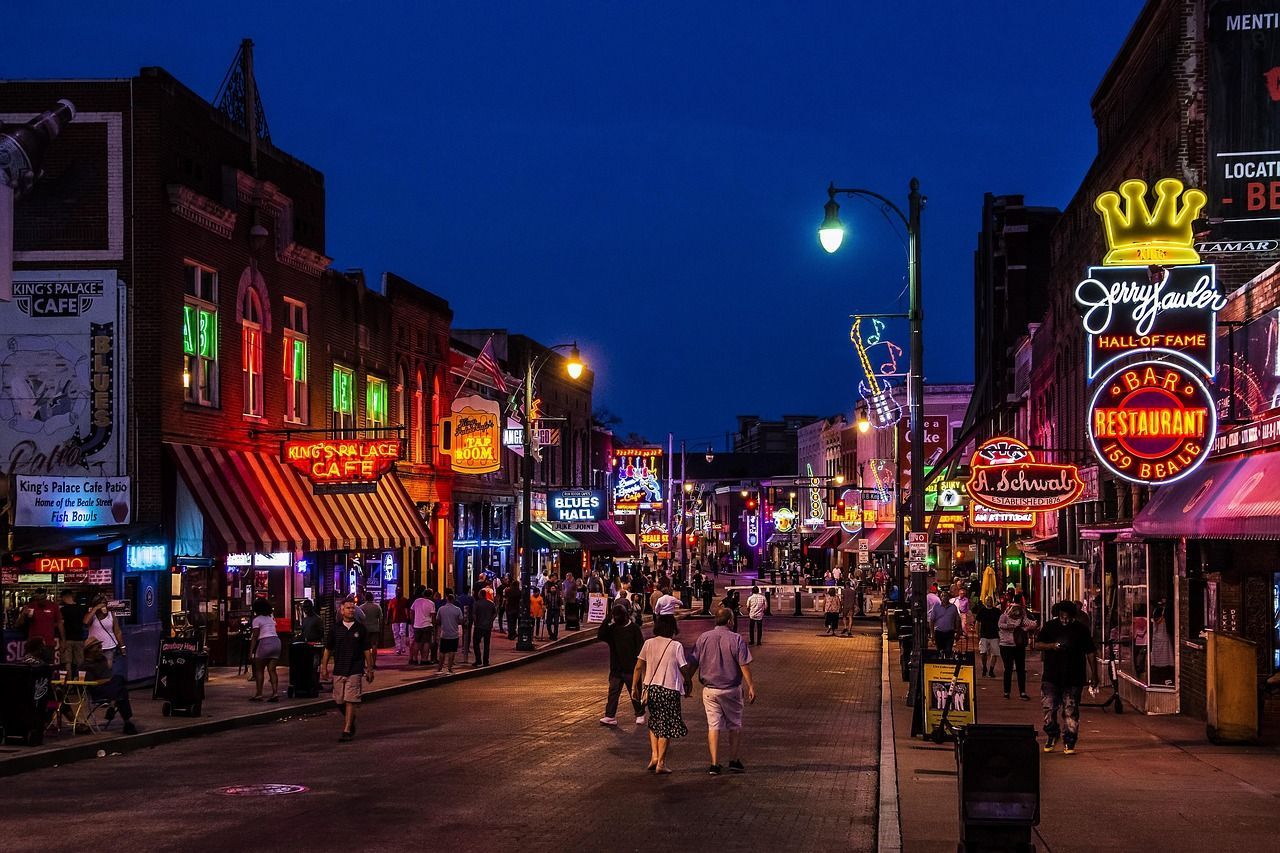Choosing the 10 best landmarks to visit in Egypt is by no means an easy task. In a country filled with as much rich and vibrant history as Egypt, there are enough opportunities here to fill a lifetime.
In order to narrow it down, we have looked at the truly can’t miss options the country has to offer, which will provide maximum value for your time. This includes everything from sprawling attractions filled with history to iconic locations recognised around the world.
So, if you are heading to Egypt and want to make sure you don’t miss out on seeing any of the best bits, our list of the 10 best landmarks to visit in Egypt should have you covered.
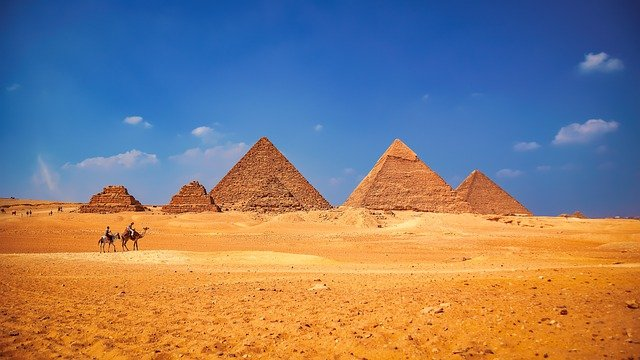
Egypt At A Glance
Egypt is one of the oldest countries in the world, with its origins dating back as far as 6,000 BC. Many believe it to be the first cradle of civilisation, with some of mankind’s earliest examples of agriculture, government, religion, urbanisation, and writing found here.
Egypt straddles the continental divide between Africa and Asia. Covering over 1,000,000 square kilometres (386,000 square miles) and boasting a population of around one million people, it is among the largest and most populous cities on either continent.
The country features an incredibly uneven population spread, with over 50% of people living in urban areas along the Nile Delta. This has historically been the case as well, with most of the ancient settlements located in similar areas.
While Egypt has long been popular with archaeologists and casual history fans, in recent years it has developed a reputation for regular tourism too.
Exclusive resorts and fabulous Nile cruises combine with the historical wonders to make Egypt a destination suitable for travellers of all tastes.
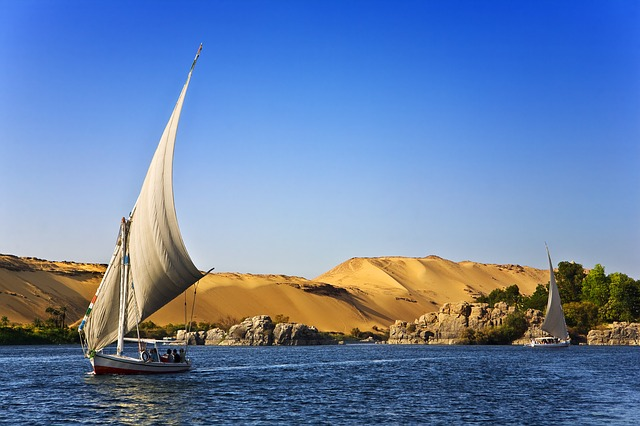
Best Time To Visit Egypt
The best time to visit Egypt is a little different to most places, as it features a hot dessert climate.
This means that, while it is warm all year round, with average temperatures rarely dropping below 10°C (50°F), the normal summer vacation season can see temperatures become overwhelming.
As such, the best times to visit Egypt are the months of April and May or the period from mid-September to the end of November.
These times will provide wonderfully warm weather but won’t quite reach the kind of dizzying highs that have you constantly seeking out shade of shelter.
They also come with the added bonus of being outside of the traditional summer vacation season, meaning crowds at hotels and attractions tend to be a little bit smaller.
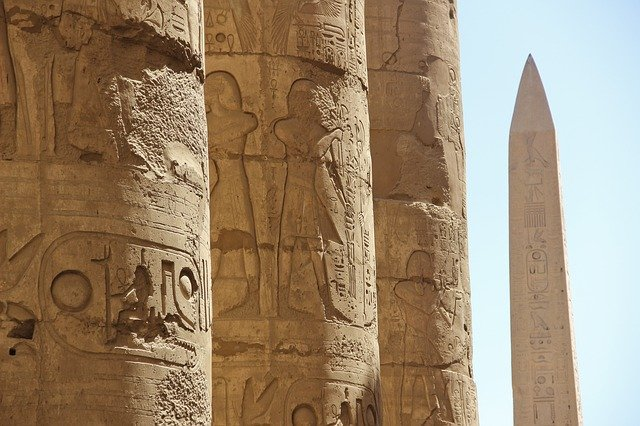
Best Landmarks To Visit In Egypt
As we move to our list of the 10 best landmarks to visit in Egypt, I am going to suggest a broad range of options. These will include things to appeal to travellers of all different interests, while ensuring you have something to cover everything that Egypt is known for.
See One Of The World’s Most Iconic Landmarks At The Great Pyramid Of Giza
The Great Pyramid Of Giza is the oldest of the Seven Wonders Of The Ancient World and the only one that still remains almost completely intact.
Made from limestone, mortar, and granite, it is a perfect example of how advanced the Egyptian building methods were for their time.
Believed to have been built around 2600 BC, the Great Pyramid was originally 146.6 metres (481 feet tall), with a base 230.3 metres (756 feet) in diameter.
It was the tallest man-made structure on Earth for almost 4,000 years and remains one of the most famous landmarks in the world to this day.
At least 3 chambers have been discovered inside the Great Pyramid. While one remains unfinished, the other two contain a granite sarcophagus, believed to have been for the burial of a king or queen.
The Great Pyramid is located in the Giza Pyramid Complex, also known as the Giza Necropolis, on the outskirts of Cairo.
Other attractions in the complex include The Great Sphinx Of Giza, the Pyramid Of Khafre, and the Pyramid Of Menkaure, making it a must visit attraction on any trip to Egypt.
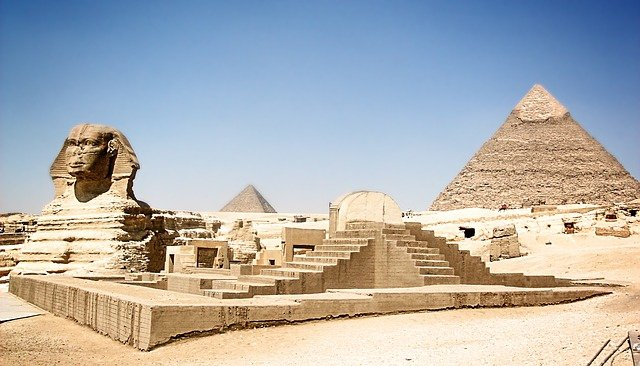
Experience The Power Of The Aswan Dam
The Aswan Dam is the largest embankment dam in the world and was built over a period of ten years between 1960 and 1970.
Considered a pivotal element of the industrialisation of Egypt, the Aswan Dam was seen as essential to the development of the country’s economy and culture.
Capable of preventing flooding, storing water to be used in irrigation, and generating hydroelectricity, Aswan Dam plays a vital role in nourishing, powering, and protecting the people in the surrounding area, as well as greater Egypt.
Beyond marvelling at the grandeur of the construction or appreciating the importance Aswan Dam has for the Egyptian people, the surrounding waters act as a nesting ground for the famous Nile Crocodile.
This makes a trip to the site an ideal way to appreciate both the country’s engineering and wildlife.
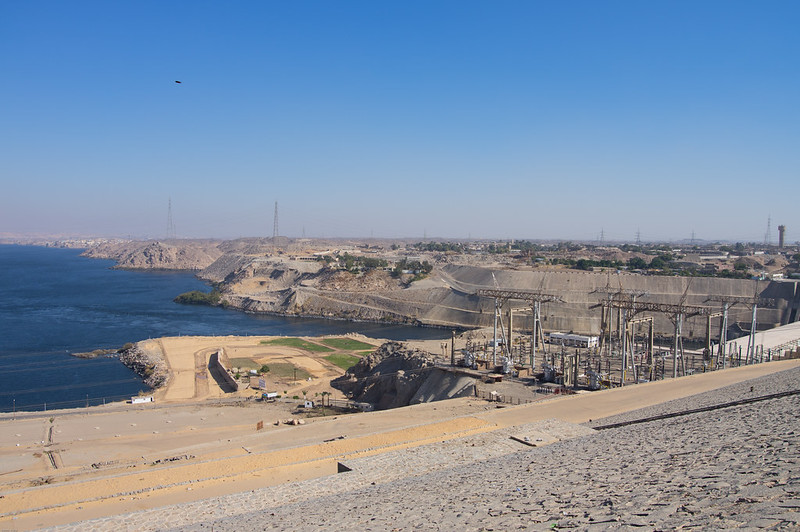
Explore The Historic Valley Of The Kings
The Valley Of The Kings is a valley on the outskirts of modern day Luxor, where the pharaohs and nobles of Egypt were buried for almost 500, years between the 16th and 11th centuries BC.
It is located in the Theban Necropolis, which served the legendary ancient city of Thebes.
At present, 63 separate tombs have been found in the Valley Of The Kings, ranging from simple burial pits to elaborate tombs with more than 120 individual chambers.
The area has been a site of interest since Roman times, yet new tombs have been discovered as recently as 2008.
The more elaborate tombs of the prominent royals are adorned with carvings and sculptures from Egyptian mythology. This helps to determine the religious beliefs and funeral practices that were held during that particular period.
Countless important historical figures have been buried here. However, it was the discovery of the tomb of Tutankhamun in the 1920’s that really drove up interest in the site, as it was the best preserved, most intact tomb known to have been discovered anywhere in Egypt.
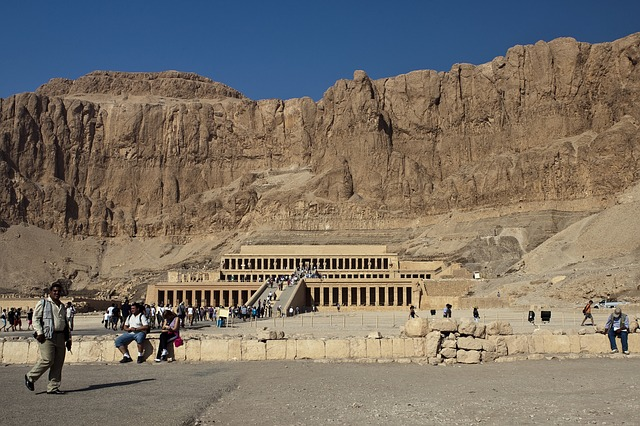
See The Evolution Of Egypt At Abu Simbel
Abu Simbel is a UNESCO World Heritage Site on Lake Nasser’s west bank containing a pair of gigantic rock temples.
Carved into the mountainside in the 13th century BC, during the reign of Ramesses II, they are designed to honour him, his victory at the Battle Of Kadesh, his wife Nefertari, and their children.
Four huge statues standing 20 metres (66 feet) high depict Ramesses on his throne wearing the crowns of Egypt, while smaller icons of his family stand by his feet.
The interiors of the temples feature grand chambers, adorned with more statues and carvings depicting his victories in battle.
Despite the beauty and grandeur of Abu Simbel, it is its unique history that makes it such a popular attraction.
Having previously been damaged, the entire complex was relocated in 1968 to a higher location, in order to avoid them being submerged during the creation of the Aswan Dam.
Carefully cut into large blocks and reassembled in its new location, just as it was found, Abu Simbel is a perfect example of the evolution of Egypt.
Its original construction showed how advanced Egyptian civilisation was for its time, while the relocation shows how much further they have come since.
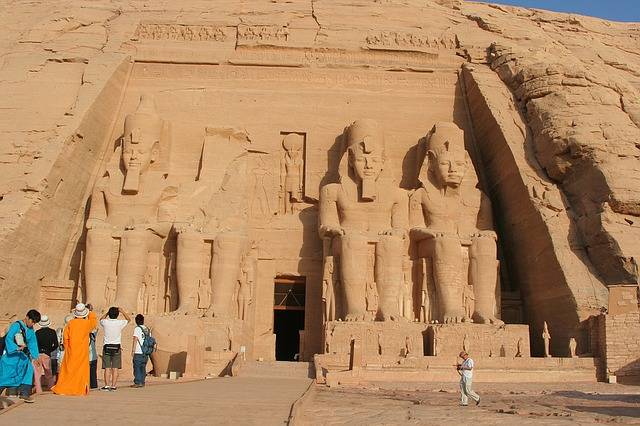
Marvel At The Beauty At The Ancient Karnak Temple Complex
The ancient site of Karnak is a vast temple complex believed to have been built around 2000 BC. Filled with the crumbling remains of chapels, monuments, pylons, temples, and various other buildings, it is one of the oldest remaining settlements of its kind.
Located in the ancient city of Thebes, on the outskirts of modern-day Luxor, Karnak is largely divided into four sections.
These include precincts dedicated to the deity Amun-Re, his wife, and child, as well as a temple to the pharaoh Amenhotep IV, which has been intentionally destroyed.
Among the historic sites in Karnak are the iconic Great Hypostyle Hall, with its 134 stunning columns. You also have the Karnak Open Air Museum, an attraction filled with beautiful shrines and chapels that is believed to be the second most visited in all of Egypt.
Another point of note at Karnak is the presence of two obelisks, dedicated to Hatshepsut and Tuthmosis I.
While obelisks were once common throughout Egypt, pillaging through the centuries as seen them dispersed around the world. Presently only four remain in Egypt, with half of them located in Karnak.
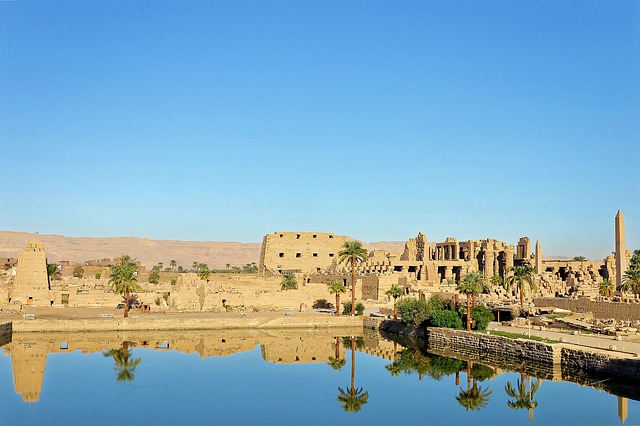
Learn About The Development Of Egypt At Luxor Temple
Luxor Temple was one of two major temples in the ancient city of Thebes, along with Karnak, and was built around 1400 BC.
Through the ages, Luxor Temple has been expanded and developed by various legendary rulers, such as Alexander The Great, Tutankhamun, Amenhotep III, and Ramses II.
Much like Karnak, Luxor Temple also contains one of the four obelisks remaining in Egypt, that of Ramses II. For those interested, the fourth and final remaining obelisk in Egypt is the obelisk of Sesostris I, located in the Heliopolis region of Cairo.
A 2 kilometre (1.25 mile) stretch known as the Avenue Of Sphinxes connects Luxor and Karnak temples. It boasts 600 sphinxes with the heads of either humans or rams and is a truly stunning and unique sight to behold.
The two temples and avenue, as well as much of the surrounding area, combine to form the Thebes archaeological site. This whole area is filled with incredible historical attractions to discover and has been designated a UNESCO World Heritage Site since 1979.
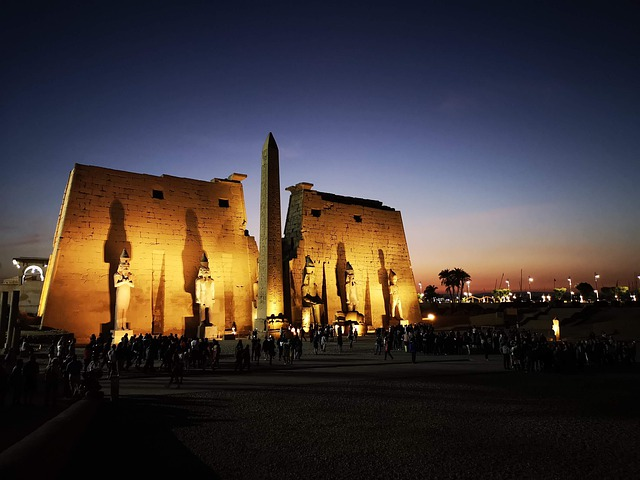
Discover One Of Egypt’s Most Monumental Statues With The Colossi Of Memnon
The Colossi Of Memnon are two colossal statues in the Theban Necropolis, to the west of the River Nile. Erected in 1350 BC, they stand 18 metres (60 feet) tall and are each made of a single piece of stone.
Each statue depicts Pharaoh Amenhotep III sat on a throne, gazing out across the river.
Much shorter depictions of his wife and mother are carved into the front of the throne by his legs, while the sides depict images of the god of the Nile, Hapi.
They were designed to guard the entrance to Amenhotep’s memorial temple, where he was worshipped as a god, both in life and death.
With the temple destroyed thousands of years ago by flooding and earthquakes, the Colossi are all that remain of the site.
Badly damaged themselves by the elements and repaired during the Roman era, they still offer a glimpse into just how important the pharaohs were considered in Egypt.
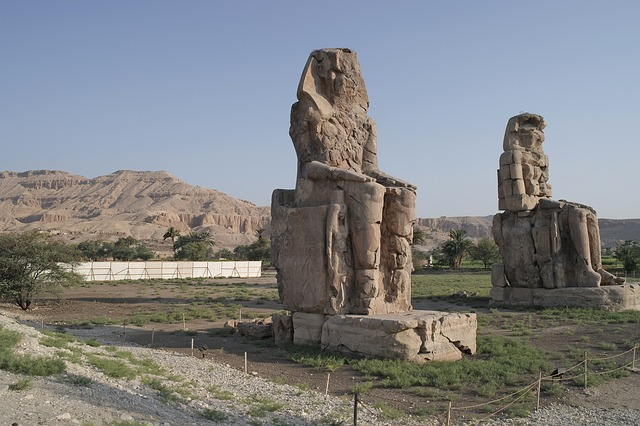
Find Out About One Of The World’s First Libraries At The Bibliotheca Alexandria
The Bibliotheca Alexandria is a modern day homage to the Library Of Alexandria, one of the largest, oldest, and most important libraries in history, which was located within the same city.
Opened in 2002, the Bibliotheca is capable of holding eight million books, and has collections donated from around the world, in languages including English, French, and Spanish.
The Bibliotheca Alexandria houses four museums, four art galleries, six specialised libraries, fifteen permanent exhibitions, a planetarium, conference centre, laboratory, and a 20,000 square metre (220,000 square foot) reading room.
This allows the Bibliotheca Alexandria to provide the opportunity to learn everything there is to know about Egypt, as well as so much more.
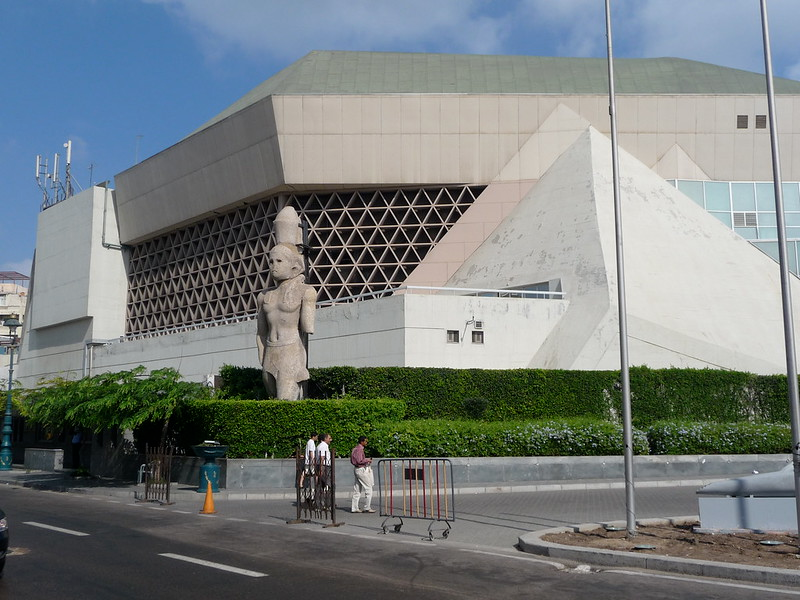
Understand The True Magnitude Of The Nile
The River Nile is the longest river in the world, running for 6,650 kilometres (4,130 miles), between Lake Victoria and the Mediterranean Sea.
It runs through an incredible 10 countries, including Burundi, Congo, Egypt, Ethiopia, Kenya, Rwanda, South Sudan, Sudan, Tanzania, and Uganda.
Ancient Egyptian and Sudanese Kingdoms have historically relied on the River Nile, with the vast majority of Egyptian attractions and settlements located along its banks.
Even in modern times, it provides millions of people with the water they need to survive, as well as operating trade routes that link countries around the world.
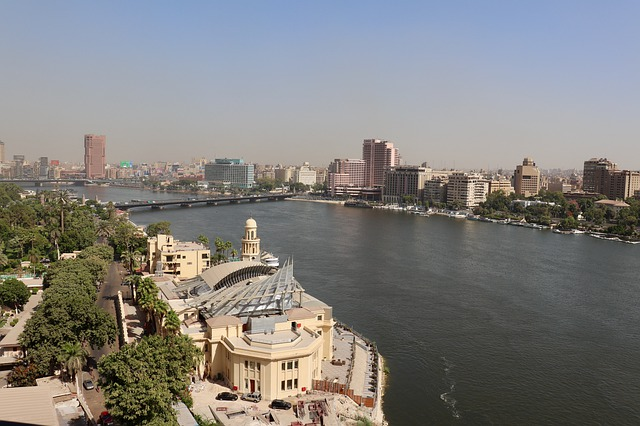
Visit A Living Museum At Pharaonic Village
Unlike most of the ancient attractions on this list, the Pharaonic Village is a living museum in Giza that features recreations of famous sites and traditional villages from throughout the different ages in Egypt.
Attractions like recreations of Tutankhamun’s Tomb and an ancient village show how such locations would have looked before time and the elements took their toll on them.
While perhaps not as authentic as the original locations, they can help to provide a deeper understanding of the Egyptian way of life throughout history.
Combined with a collection of museums, statues, attractions like boat rides, and guides in traditional dress explaining what you’re seeing, the Pharaonic Village is a wonderful way to learn all there is to know about Egypt, from ancient times to modern day.
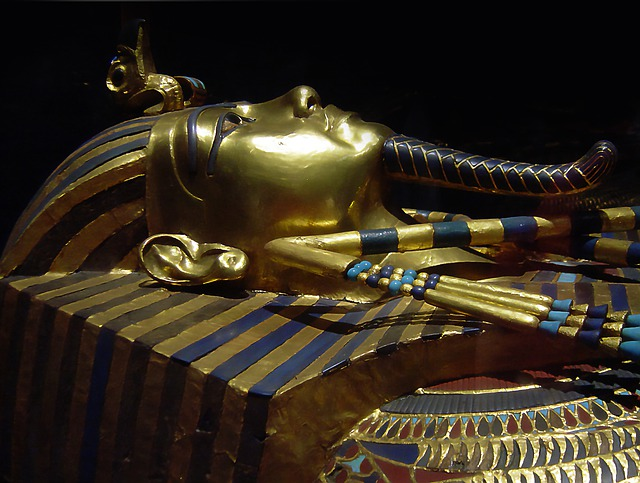
Best Hotel To Stay In Egypt – Cairo Marriott Hotel & Omar Khayyam Casino
The Cairo Marriott Hotel & Omar Khayyam Casino is a stunning, historic, 5-star resort, set inside a converted former palace in Cairo.
Guests here will be blown away by amazing, panoramic views of the River Nile from its Twin Towers, as well as the incredible six acres of palace gardens.
The resort features a collection of 15 restaurants for you to choose from, serving cuisines including Italian, Japanese, Middle Eastern, and International. Most offer the choice to either dine in the restaurant, go al fresco, or order your meals as room service.
Those not looking for a full meal also have a choice of 6 bars and cafes, where drinks, refreshments, and light meals are available. Other attractions in the communal areas of the hotel include a casino, spa, and swimming pool.
In the rooms themselves, all guests will enjoy luxuries like air conditioning, Wi-Fi, a mini bar, satellite TV, tea and coffee making facilities, and a regal private bathroom.
Many will also feature a private balcony, where you can take in the views of the river and gardens in peace and quiet.
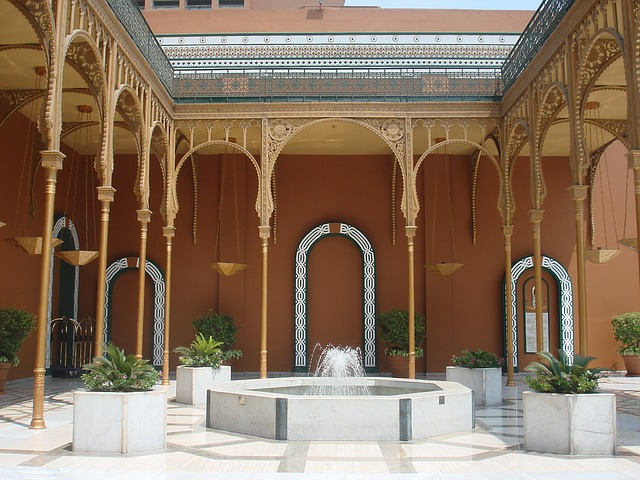
Conclusion
Egypt may have more historical wonders from the ancient world to discover than anywhere else on Earth. This makes it the ideal destination for anyone even remotely interested in history.
While devoted fans of archaeology could spend years in Egypt and still not get bored, our list of the 10 best landmarks to visit in Egypt will hopefully have helped even casual fans to fill out a rich and vibrant itinerary.
That means all you have left to do is get everything booked. That way, you won’t be worrying about missing out on your favourite hotel or attraction and can start looking forward to experiencing it all for yourself as soon as possible.
